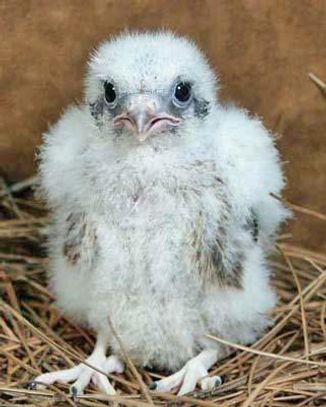AQHA MARE FOR SALE, BLOODLINES OF DOC'S STARLIGHT, DOC O'LENA, PEPPY CHEX DOC
Falcon chick in hay delivery







Baby Chick fell out of the Hay

When our hay was being unloaded from the trailer this hatchling came out of a hole between bales. Fortunately the squeeze operator noticed him (or her) on the trailer. We located the nest site and found two eggs as well.
We located a licensed falconer in the area and she (Randy) came to the ranch and we gave the chick to her for care, we checked back with Randy the following day and found that the chick was doing well.
When the time is appropriate if it is possible this one will be returned to the wild.
The American Kestrel is the smallest member of the Falcon family, which also includes the Peregrine Falcon, the world’s fastest bird. Kestrels are much smaller, being scarcely larger than a Bluejay. They are also the most colorful of our native hawks, especially the males, which have rusty red backs and tails, combined with blue wings. Both sexes have a black cap and a noticeable vertical line under the eye. Kestrels prefer to hunt over open ground for grasshoppers, crickets, and other insects, as well as mice, voles, and other small rodents. They are one of the few hawks that can hover, a skill that allows them to maintain a fixed position in the air while pinpointing the location of their prey in the tall grasses where they usually hunt.
Incubation requires about 30 days. Nestlings begin to open their eyes only a day or two after hatching. The mother broods the nestlings for only 8 to 10 days, as Kestrels develop rapidly, and fledge only 28 days after hatching. At this stage they might better be called branchers, because their flight is clumsy, and they spend much of their time perched on a low perch or concealed on the ground, where they may move around freely on foot. They develop their flight and foraging skills quite rapidly, however, and remain dependent on their parents for food for only a few weeks after fledging. Except in fairly rare cases where a cavity nest is destroyed, most juvenile Kestrels are found in this brancher stage of development, making the task of reuniting fairly simple and straightforward
Collins Horse Ranch © Copyright. All Rights Reserved
Powered by GoDaddy Website Builder